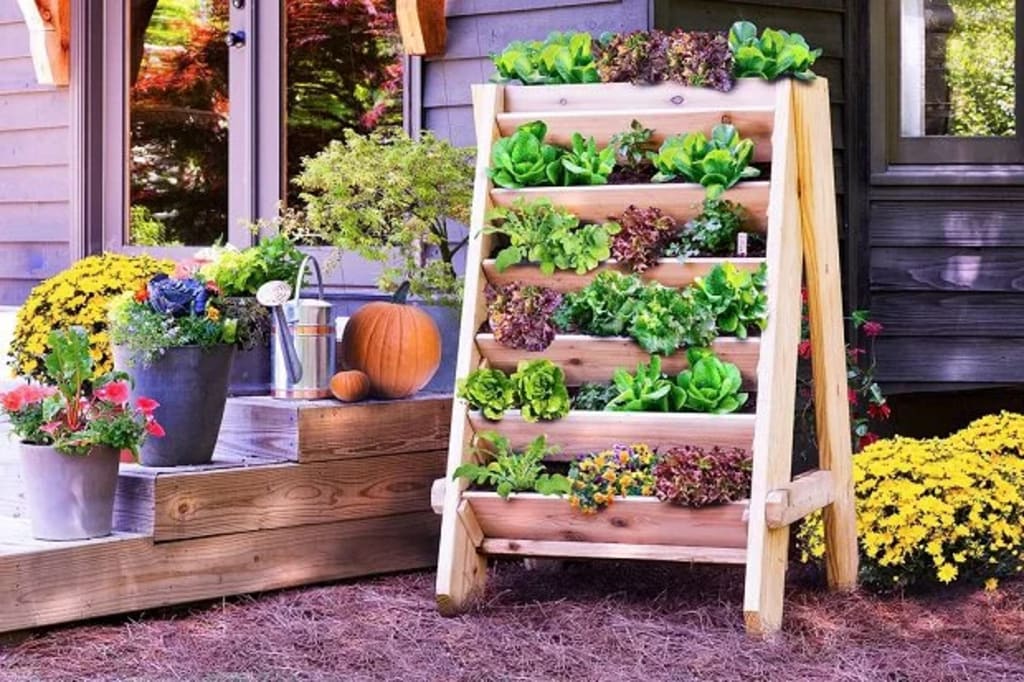The Rise of Vertical Gardening
Green Solutions for Urban Spaces

Introduction
In the concrete jungles of modern cities, where space is a luxury, a green revolution is taking place. Vertical gardening has emerged as a revolutionary concept, providing a solution for urban dwellers longing to reconnect with nature. This article explores the phenomenon of vertical gardening, its benefits, and how it is transforming urban spaces. Discover how this innovative approach is not only aesthetically pleasing but also environmentally friendly, making it a viral trend for sustainable living.
Section 1: The Concept and Beauty of Vertical Gardening
Vertical gardening is a creative and space-efficient technique that involves growing plants on vertical surfaces such as walls, fences, and even high-rise buildings. It allows urban dwellers to transform barren spaces into lush green oases. With cascading vines, vibrant flowers, and lush foliage adorning vertical structures, the beauty of vertical gardens creates a mesmerizing visual spectacle that captivates the imagination and rejuvenates the spirit of urban environments.
Section 2: Maximizing Space in Urban Areas
In crowded urban areas, every square inch counts. Vertical gardening offers a smart solution to optimize space. By utilizing vertical surfaces, such as balconies, rooftops, and walls, urban gardeners can create thriving gardens without sacrificing precious floor space. Whether it's a pocket-sized herb garden or a towering living wall, vertical gardening allows city dwellers to bring nature into their surroundings, enhancing the quality of life and fostering a sense of well-being.
Section 3: Environmental Benefits of Vertical Gardens
Beyond their visual appeal, vertical gardens offer a range of environmental benefits. They act as natural air purifiers, absorbing carbon dioxide and releasing oxygen, helping to mitigate air pollution in urban areas. These green installations also act as insulation, reducing the energy consumption needed for cooling and heating buildings. Furthermore, vertical gardens help to combat the heat island effect by moderating temperatures and improving overall air quality in urban environments.
Section 4: Enhancing Biodiversity and Urban Wildlife
Vertical gardens serve as miniature ecosystems, providing habitats for a diverse array of plant and animal species. By creating vertical green spaces, we can attract pollinators like bees and butterflies, contributing to the preservation of biodiversity. Birds, insects, and even small mammals find refuge in these urban oases, helping to restore ecological balance in concrete-dominated landscapes.
Section 5: Edible Vertical Gardens and Urban Agriculture
Vertical gardening is not limited to ornamental plants; it also offers the opportunity to grow fresh produce in urban settings. Edible vertical gardens enable urban agriculture, allowing individuals to cultivate herbs, vegetables, and even fruits. With innovative techniques like hydroponics and aeroponics, vertical gardens can maximize yields while minimizing water usage, providing a sustainable solution to urban food production.
Section 6: Improving Mental Health and Well-being
Numerous studies have shown the positive impact of green spaces on mental health and well-being. Vertical gardens bring nature closer to urban dwellers, offering a respite from the stresses of city life. The sight of lush greenery, the soothing sound of rustling leaves, and the touch of natural elements provide a therapeutic escape. Vertical gardening promotes relaxation, reduces stress levels, and enhances overall mental well-being, contributing to a healthier and happier urban population.
Section 7: Inspiring Community Engagement and Social Interaction
Vertical gardening has the power to bring communities together. Whether through communal gardens, vertical garden projects, or urban farming initiatives, these green spaces create opportunities for social interaction and community engagement. People come together to share knowledge, exchange gardening tips, and foster a sense of camaraderie. Vertical gardens become hubs for neighborhood gatherings, fostering a stronger sense of belonging and community pride.
Conclusion
Vertical gardening has emerged as a powerful green solution for urban spaces, providing a way to reconnect with nature and transform the concrete landscapes into vibrant, sustainable environments. With its visual appeal, environmental benefits, and positive impact on well-being, vertical gardening is revolutionizing how we view and interact with urban spaces. As this viral trend continues to rise, it holds the promise of a greener, healthier, and more harmonious urban future.





Comments
There are no comments for this story
Be the first to respond and start the conversation.